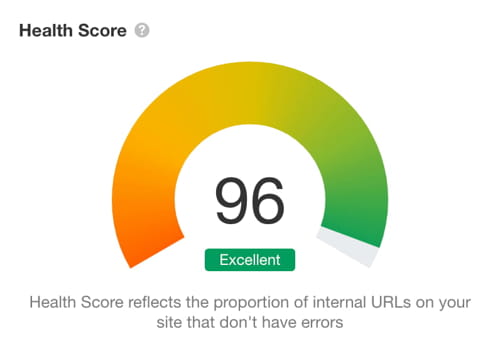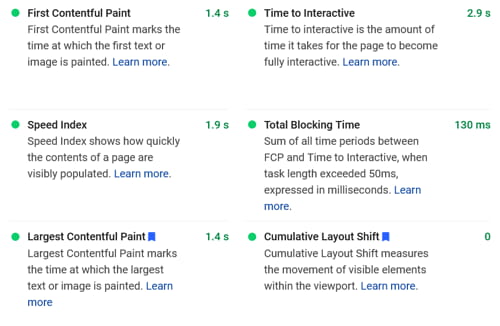A common SEO mistake often committed by those new to the field is to implement strategies that have found success in large markets like the US. The logic behind this is sound. After all, if something worked in one of the most competitive markets in the world it would definitely work in your corner, right?
Well, the truth is that SEO can be a little complicated. Google uses the same algorithm no matter where you are in the world, but every market has its own peculiarities. These can become obstacles if you don’t prepare for them adequately, so it is important to keep the specific requirements of your small market in mind so that you can implement the most effective SEO tactics.
In order to get a better understanding of how SEO works in smaller markets, we are going to be looking at a case study of one of our recent clients from Australia. Operating in a saturated market, they had their work cut out for them if they wanted to stand out. The SEO operation has gone along incredibly well. We will be taking a look at how we managed to achieve this level of success.
There are three prongs to any SEO strategy, namely technical health, content creation and link building. We will be looking at all of these in detail below. However, we will first start off by looking at where the company was before SEO was implemented. This will put the results into perspective and help you come to your own conclusions about whether or not it did the job.
The Starting Point
Before the implementation of SEO, the client’s statistics were quite poor in all three areas. If you looked at technical health, the brand’s website had an overall health score of only 72. That is far too low to be sustainable, and it proved to be a huge impediment to the company’s attempts at becoming dominant.
From a content perspective, the metric that we use to determine success is keyword ranking. Before implementing adequate SEO that was in line with the needs of its market, the client ranked on about 6,298 keywords. This is admirable, but not nearly healthy enough to attain the level of relevance that they desired.
Finally we will look at link building, arguably the most convoluted yet most essential of SEO approaches. The client had very few links leading back to its main website, and this hindered its ability to market itself to interested consumers. This is usually the last step to optimizing for a search engine, but it can only be accomplished through reasonable efforts in the previous two areas.
Now that we have painted a picture of where the client started out, we can now discuss the tactics that were used to get them the results they were actually looking for.
Technical Health

This should always be the first step to optimizing a website for search engines. One should begin by compiling a health report that will reveal the technical problems that the site is currently facing. This report can be created through a site audit, and the first thing that will lower your overall health score would be errors including missing pages, a lack of meta descriptions as well as a bunch of other things.
There are three other factors that can impact a health score according to Google. All of these factors have to do with the overall user experience. The first of these three is loading time. A site’s loading time should ideally be kept to less than 2.5 seconds. Any longer than this would probably make a user click away before they have obtained any information from the page in question.
Secondly you have to look at input delay. Input can be anything from a click to a keystroke, and users should get a response no longer than 0.1 seconds after the input. The final factor is how stable the layout remains as the user moves around the site, and you should aim for a score of 0.1 if you want your site to remain competitive.

Looking at all of these things reveals that a key aspect of implementing quality SEO is to make the user experience as seamless and pain free as it can be. Efficient web design is therefore critical to improving search engine rankings, so a quick way to implement SEO would be to make your site as light as possible. This would reduce loading times and input delay, and when coupled with the fixing of broken links and absent meta descriptions it can go a long way towards streamlining SEO.
Content Optimization
Just like with anything else, this SEO step can’t be completed without conducting an audit. While some of your pages would be performing well enough, the ones that you need to focus on will be low performing pages. There are three metrics that you can gauge the success of a page by, namely views, sessions and links. Chances are that a lot of your old content would not be suitable for your SEO goals. Don’t be afraid to clean it up and create new content to replace it. Sometimes replacing something is a lot more efficient than trying to fix it.
Next you should take a look at content areas that your competitors are excelling in. This will show you areas that you should try to rank for, and it will give you a better idea of what keywords would be most effective for you. Successful competitors can be a real gift if you think about it because you can use them to create a roadmap for yourself, one that would be relatively easier to follow than if you had to build an entire strategy from scratch.
In the case of our client, they first wrote accurate descriptions for all of their pages. Each product was given a detailed description, and this added some much needed keywords into the mix as well. Customers need to be able to get a good sense of what you offer as soon as they reach a page. This can help with link building as well later on.
Internal links are a vital component of this strategy too. A user should never have to click away from your site to obtain the information that they desire. This would be highly inefficient and will reduce total organic session times across the board. Build as many internal links in your content as you can to help users navigate the site without having to click away.
Consistency is key in the world of content, so it is important to create a strategy that would facilitate regular content creation. Blog posts are a great way to do this, and you can add those all-important internal links to your blog posts as well. These links would lead to what we call “money pages”, namely the pages that you would want to see being ranked on a search engine results page.
Link Creation
While there are a lot of ways to increase the relevancy of your domain, link building is the fastest and most intuitive. This is why we chose this approach over all others. This is where the differences in small markets and big markets really start to become apparent.
One tactic that worked really well for our client involved searching for trending topics and creating pages and content based on these trends. In the case of our client, a political issue had become a real hot button issue. Hence, we capitalized on this by creating a page dedicated to the topic. The client’s expertise came in handy here, so you should always focus on trends that you can contribute to organically rather than simply jumping on to every bandwagon that you find.
Collaborating with other sites works quite well too. If you get a link from an authority site on a particular subject matter, this can increase your relevance in the eyes of a search engine. Hence, you should opt for the “you scratch my back, I scratch yours” approach here by collaborating with websites for mutual benefit.
Finally, you need to take stock of any preexisting links you might have had which are now lost or broken. Broken links can really drag your ranking down since they’re sending all the link juice to a page that is not live anymore, so once you have optimized your link creation in various other categories you can focus on fixing any lost links that you might have left hanging. This would result in a clean and optimal SEO approach that would generate plenty of healthy links over a period of time.
The Results
Now that we have told you about the strategies that we used, strategies that you can implement in your own SEO as well, it is time to talk results. We were able to bring their health score up to 96, a massive increase from their previous score of 72. Prior to SEO they had 73 poor URLs, 149 URLs needing improvement and just 3 good URLs on mobile. On desktop they had 69 poor URLs, 152 URLs that needed improvement and 0 that could be considered good.
Following our SEO implementation, we were able to clean up a lot of bad URLs and now the client has a grand total of 87 good URLs on mobile and 79 on desktop. It no longer has any URLs in the bad or needing improvement categories.
With content, we were able to increase the number of keywords from 6,298 to 55,280. This is a very healthy increase that has gone a long way towards improving the client’s standing in search engine rankings.
We saw some truly positive results with link building too, seeing an increase of about 38% in referring domains.

In Conclusion
The demands of a foreign market will inevitably be different from a large one. The case of our client shows just how important it is for people to be flexible when it comes to SEO. Being rigid and applying the same tactics regardless of the specificities of each case will only result in failure. If there is one thing that you should take away from this, it is that foreign markets require a more hands on approach and you sometimes need to improvise particularly in areas such as link building!
Your Turn
An effective SEO campaign starts with an audit and if you don’t know how to do one then you can use our free tool below to find out your website’s weaknesses and strengths.

